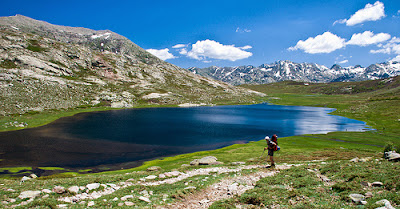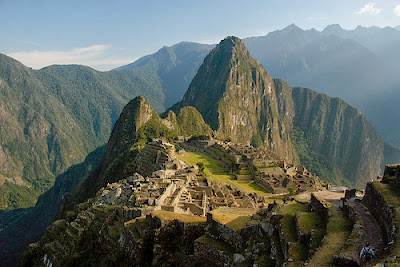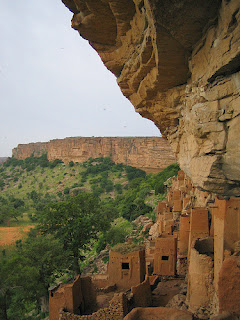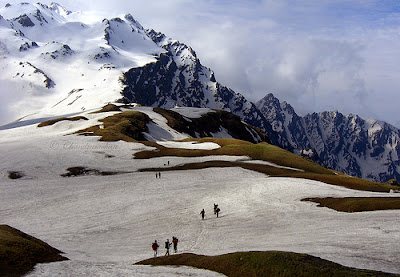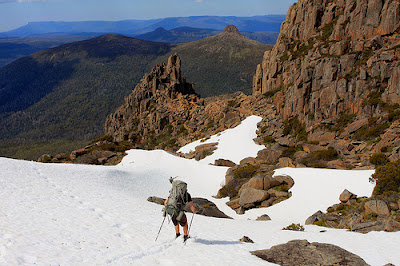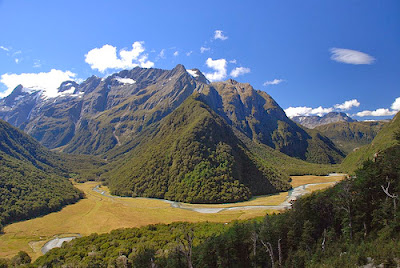The Wat Pa Luangta Bua Yannasampanno Forest Monastery, popularly known as Tiger Temple, in Thailand's Sai Yok district of Kanchanaburi province, provides a lifetime experience with the big cats.
Located about 175 km from Thai capital Bangkok on Highway-323, the excitement starts building up from the moment you embark on the three-hour journey. It is when the tigers are before your eyes and one is roaming freely, though quietly, around the big cats that one realises how special the moment is.
With monks, local trainers and staff and several foreign volunteers in attendance, the Tiger Temple offers perhaps the closest and safest encounter with tigers - from one-month-old cubs to those weighing over 250 kg. At present, there are 127 tigers at the monastery - one of the largest group of the big cats at a single place.
As one enters the Tiger Temple gates around noon, one can find several tigers lazing around, being walked around or the younger ones busy in other activities. Alert Thai staff and foreign volunteers not only keep a close eye on the movements of the tigers but also on the scores of visitors who come to the complex daily.
"This is a real close experience with the tigers. I don't think there is a better option available anywhere else," Australian tourist Sara Evans told IANS.
The attendants help visitors to take pictures as the tigers laze around. Visitors are also taken in turns to walk the full-grown tigers and young cubs with a leash for a photo-op. At 1,000 baht (Rs.1,900) per person per activity, one can play with young tigers in one enclosure, feed tiger cubs in another one and get to keep a tiger's head on one's lap.
"One feels scared and excited about the whole experience. You are doing all this with the tigers, even touching them, without any barriers or fences," Tushaar, a 11-year-old visitor from India, told IANS with a degree of awe.
The complex, spread over several acres of natural forested area in western Thailand, not far from the Myanmar border, is home to not only tigers but other wildlife like deers, wild boars, water buffalos and gibbons, among others. The monastery was established in 1994 but the tigers came a little later.
Though the monastery has faced criticism and scrutiny about the tigers being drugged, those who manage the complex strongly refute this.
"Why can't we all live together.....after all, we all have the same blood.....and it's red," the abbot of the monastery, Pra Acharn Phoosit, pointed out.
On the frequently asked question of the tigers being drugged, the monastery's official response was: "No, they are not drugged. Tigers are nocturnal animals, so they sleep during the heat of the day. The tiger's eyes are better adapted to lower light levels than their prey. So, they can surprise their prey with greater ability in darkness. This means they are more active and hunt at night. Adult tigers are naturally lazier, whereas the cubs are more active and will play if it is not too hot."
The monastery management added: "A wild animal that has been sedated is more dangerous because they become disorientated by their surroundings and everything around them becomes a threat. This brings out their wild instincts and they are more likely to attack."
Monks at the monastery say that the big cats have been "hand-reared with compassion (by them)". The tigers get whole chicken, beef and dried cat food. The meat is cooked due to the Asian bird flu scare and so the tigers do not get the taste of blood and associate blood with food.
The Tiger Temple offers various programmes from morning to evening for visitors. The main programme begins at noon and ends around 4.30 pm - giving visitors ample time to be up-close and personal with the tigers.
Getting there:
* The Tiger Temple monastery is a day-trip from Bangkok. It is about 175 km from Bangkok and takes three hours by road (Car/Van).
* An Innova cab from Bangkok to Tiger Temple and back can cost 2,500-5,000 baht (for the whole day).
* Entry fee per person (adult or child) is 600 baht.
* Each activity inside costs an additional 1,000 baht per person per activity.
* Red, yellow and orange coloured clothes are no allowed as these can disturb the big cats.
* Attendants/Volunteers help get you near the tigers and also with photographs on your camera/mobile.
* Bangkok is connected by air to 10 Indian destinations, including the four mini metros.
Accommodation:
* A room in a five-star hotel in Bangkok costs between 3,500 and 4,000 baht.
Eating out:
* A buffet in a posh Bangkok hotel or restaurant around costs 800 baht.
* A dinner buffet Baiyoke Sky Hotel's 78th floor restaurant in Bangkok costs
850 baht.
850 baht.
* A two-hour boat ride in Bangkok and dinner on board costs around 1,400
baht.
baht.

